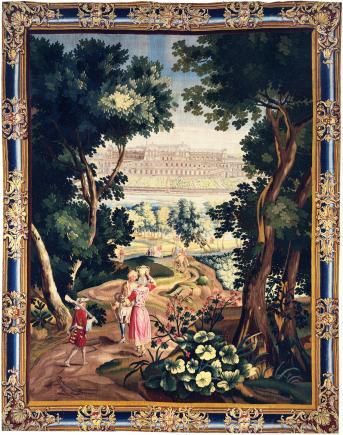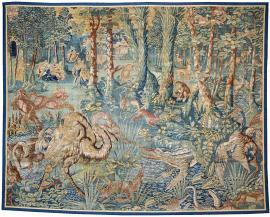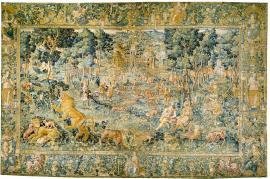Game Parks Gardens Architecture
It is not certain when the term “Game Park” was first used. The description tends to refer to 16th century tapestries depicting animals, often in combat, in parkland settings. The tapestries were almost exclusively woven in the Southern Netherlands but interestingly depict a wide range of animals from the new world and mythology. We find lions and other large cats, rhinoceros, giraffes, camels, and of course the unicorns, griffins, and dragons. The most famous of these are the tapestries at Wawel Castle in Crakow, Poland. Occasionally there are peaceful depictions but in general the designs represent "nature, red in tooth and claw." There are also tapestries depicting formal gardens, and some in which the design is taken up with a view of porticos or pergolas containing vases of flowers. Certain historic buildings have also been subjects for tapestry, most notably the Maisons Royales, the famous Gobelins series depicting the palaces and châteaux of Louis XV.
Château de Saint Germain
Price on application
Important Beauvais Tapestry
France, Early 18th Century
Derived from a famous Gobelins series: Maisons Royales
Designed by Charles Le Brun
7ft 6in width x 9ft 6in height
2.29m x 2.90m


